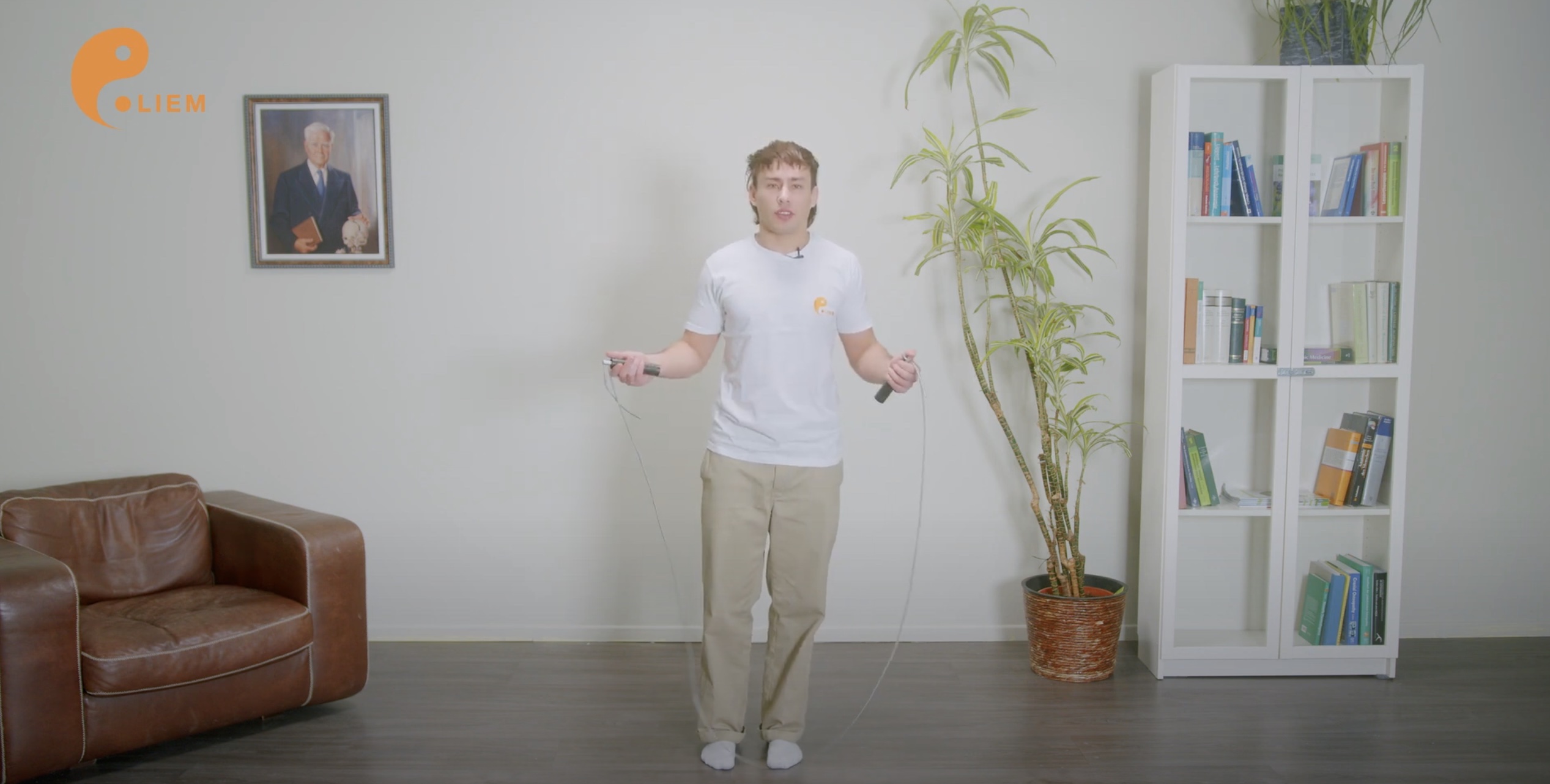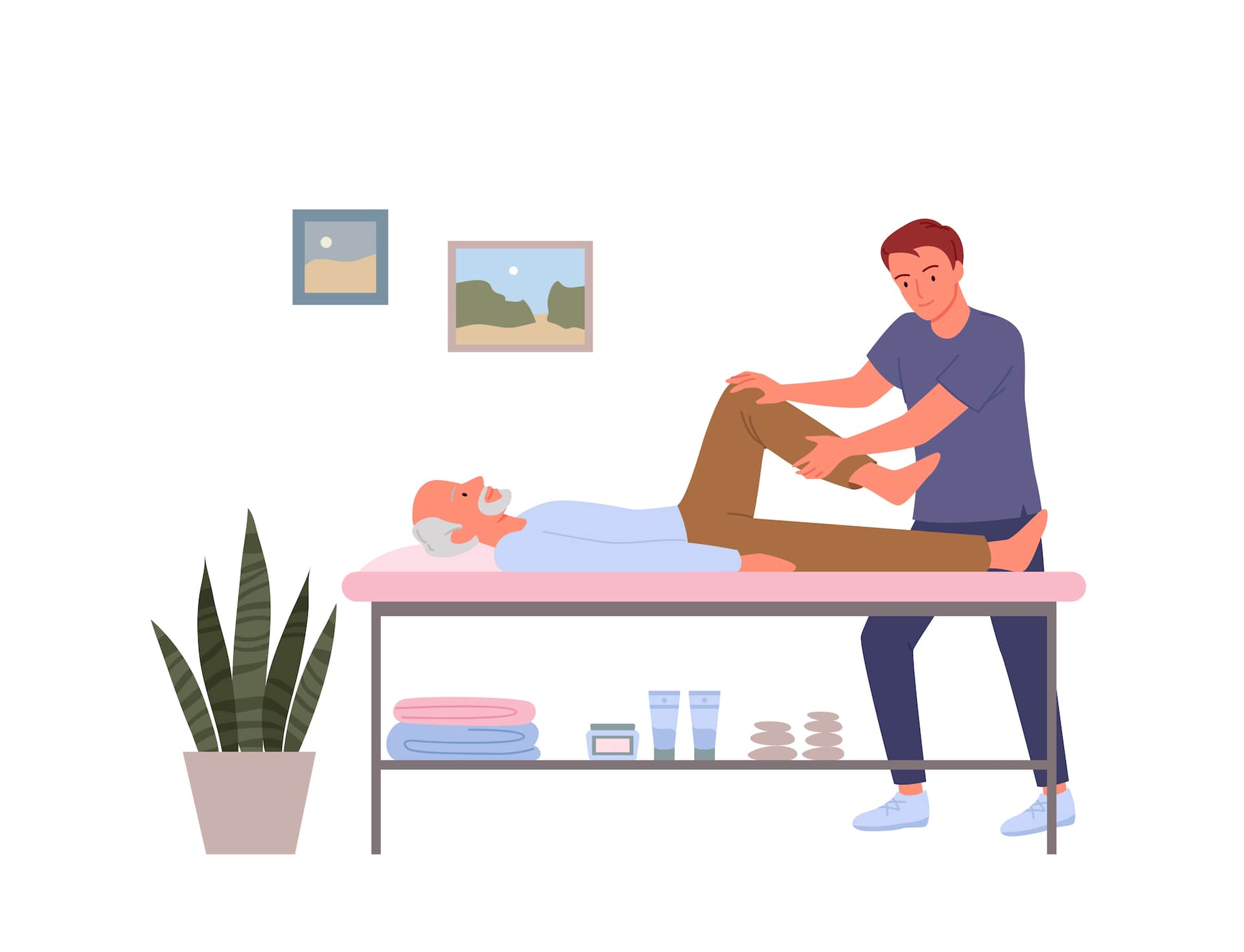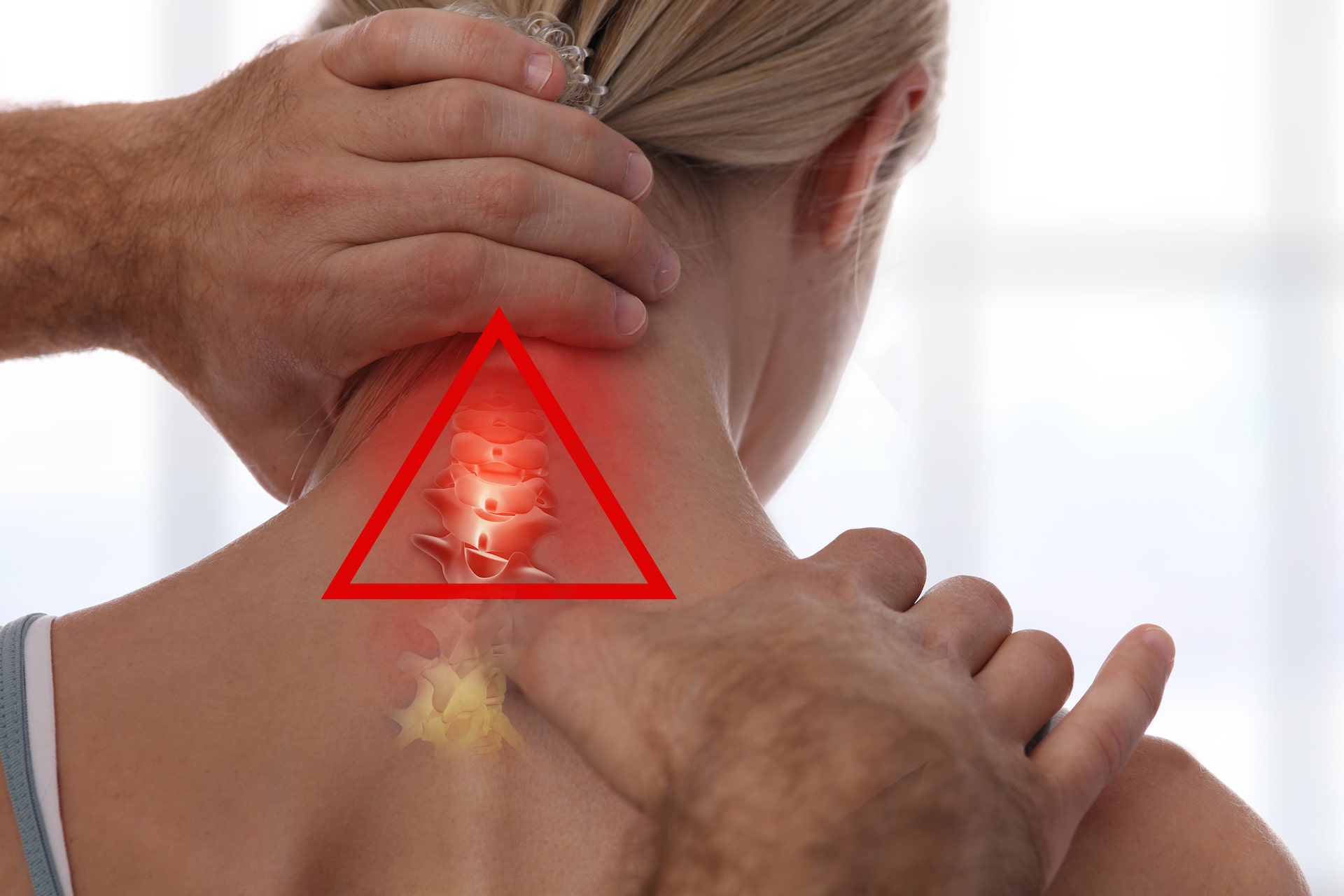Table of contents
Torsten Liem, M.Sc. Ost., M.Sc. paed. Ost., D.O., D.P.O., Osteopath G.Os.C. (GB). Founder and CEO of the Osteopathie Schule Deutschland (OSD) from 1999-2019, development of Psychosomatic Osteopathy as well as a M.Sc. programme in Paediatric Osteopathy, director of an osteopathic teaching ambulatory, author of numerous publications and co-editor of the Osteopathic medicine. International Lecturer.
The word birth trauma is used very differently in osteopathy: What do you understand by birth trauma?
By this I mean physical and/or psychological impairments that are due to events in the course of the birth process. Many factors that affect the child during the birth process can be mentioned here. These can act from the outside or also from the inside, for example consequences of a lack of oxygen in the brain. The processes can be too fast or too slow - too fast, for example, during induction of labour, in the case of a fall birth or emergency caesarean section, premature birth, etc., or too slow, for example, if the birth process falters. Birth can involve too much force, for example if the mother's pelvic floor is too tense, the mother's coccyx is displaced or fixed anteriorly and/or external forces such as a suction cup, forceps or the Kristeller handle are applied.
Any birth process that overwhelms the child in its intensity could be further described as trauma. These moments can physically damage tissues, such as the brain, and possibly hinder biological maturation; they can also express themselves psychologically and affect further emotional development. For example, trauma may be accompanied by feelings of powerlessness, helplessness, hopelessness or a sense of severe loss of control, or a lasting sense of lack of security. These deep feelings can possibly accompany the whole life as a background vibration and favour coping reactions/avoidance strategies, character structures and life designs or/and be triggered by certain situations in everyday life.
Dissociation can also occur. Hyperarousals or rather frozen states develop. These processes can be attributed to the autonomic nervous system, the ANS, and can be explained by means of the polyvagal theory. However, since episodic memory is not yet present in this early period, these feelings and moments can hardly be recorded linguistically, but can only be experienced deeply implicitly and are reflected in local or systemic tissue tensions and muscle tone as well as in certain dysregulated activity patterns of the neurovegetative system and/or over-strong or persistent early childhood reaction or reflex patterns. For example, we see a child with an over-strong Moro reflex, hypertonic psoas, sleep disorders, constricted sutures of the neuroendocrine system and high tone in the area of the coeliac ganglion.
The concept of fetal trauma should also be differentiated here, because equivalent situations can also arise for the unborn child before birth, such as oxygen deficiency in smoking mothers - or also fathers, because the smoke could also be exhaled through the skin in bed. Or alcohol consumption during pregnancy with toxin effects on the child or excessive stress, as stress hormones are placental, also twin stillbirths are to be mentioned here, etc. Perhaps in a few years we will also know more about the extent to which the act of procreation itself could have a traumatic effect on the expectant human being.
Cultural and biosocial differences must be taken into account in treatment. The way birth is handled, the early time infants and parents spend together, can vary greatly from country to country. This includes, for example, the frequency of caesarean births or circumcision rituals - the latter, of course, do not count as birth trauma, but can possibly intensify its effects.
For you, does birth trauma have all three components - body, mind, spirit - or is it possible to have a purely physical birth trauma, for example?
The first thing to clarify with this question is how body, mind and soul are defined. Still's view, for example, was certainly different from what most would understand in our time. If physical, mental and emotional effects are meant, then trauma can and usually does have physical, emotional and mental effects. Physical traumas usually have distinctly mental representations, as they represent strong distress situations in the initial experience of the person. Thus, one cannot actually separate these so-called components, rather the facets of a trauma are reflected in all facets. Soma and psyche cannot be considered separately. Their mutual interactions are more than just two sides of the same coin. They are dynamic, processual and intimately interwoven. Therefore, every therapeutic touch and work on the tissue, especially in trauma, always has a potential influence on soma as well as psyche. Nevertheless, a key factor is the dysregulation of the nervous system, which is why the influence on the ANS is essential in trauma and its treatment.
Can you elaborate on why this is so important?
I have been teaching for years the importance of dynamics, how biography is reflected in the tissue or structure by means of biochemistry, neurovegetative, metabolism etc. and vice versa. This relationship structure works reciprocally and process-dynamically.
Trauma can also manifest itself more strongly in the physical or in the psychological. Significant for the clinic are the multi-layered interactions - by this I mean the many reciprocal influences in the tissue, emotionally, in mental maturation processes, in neuromotor development, in diverse functional systems and the inner experience of the child. For example, a strengthened and persistent Moro reflex or asymmetric tonic neck reflex hinders further eye-hand coordination. In addition, there are influences such as disposition, viral loads, microbiome, immune system, toxin load, which can lower the tolerance or integration of trauma and the processing competence or vice versa. Here, bottom-up and top-down processes are important to know, to differentiate, to consider and to use in the treatment.
How does birth trauma occur?
I have already given some examples. One of the main localisations is the child's head. It is subjected to mechanical forces that may stem from a disproportion between head and pelvic size; this is phylogenetically located in increasing brain development. Maternal pelvic dysfunctions in the sacrum, coccyx, symphysis, pelvic floor, scarring, a rigid pelvis due to lack of movement or increased tone of the pelvic floor muscles are examples. If a birth is forced unnecessarily, for example with oxytocin, instead of letting it take place naturally, the birth process may be too violent. Even though there are, of course, many circumstances that make the use of labour induction measures necessary.
Factors that support or possibly hinder the birth process can be examined. The birth positions of the mother should be discussed here: For example, a birthing position in the squatting position, which increases the pelvic diameter, offers advantages over variants in the supine position. During different stages of labour, different areas of the head region may be affected. In the case of an umbilical cord wrapped around the neck, it affects the neck region and, due to the lack of oxygen, mainly the brain. The brain is very sensitive to oxygen deficiency, which means that it is affected in any situation that causes it.
Meconium aspiration, which however usually takes place before the actual birth begins, affects the entire organism, as does the use of anaesthetics. The latter would have to be discussed in a more differentiated way depending on the procedure and substance. A high release of adrenaline during birth is an important protective reaction of the child, which may be missing in a planned caesarean section. Physical trauma can also occur in the area of the shoulders, for example at the clavicle or the brachial plexus.
How can you diagnose birth trauma or what is your way of diagnosing it?
All our senses are involved in the assessment. We pay attention to physical, emotional, cognitive signs and the child's social behaviour. I attach great importance to the anamnesis, the conversation. How was the pregnancy, the birth, the birth position, what were the first reactions after birth? What is the behaviour of the newborn or child, its reflex pattern? Can it be breastfed, does it show swallowing or sucking problems, a torticollis, etc.?
Post-traumatically, we always find changes in the ANS. That is why the assessment of the ANS is very essential. What are the qualities of the heartbeat? We can also measure the neurovegetative by means of heart rate variability. Not only high obvious stress levels, but also paradoxical levels are an indication of trauma. What is the child's facial expression, does he make eye contact? What is the skin like, cold or warm, what colour is it? How is the breathing, do the lungs unfold well during breathing, how does the abdomen move during breathing? Is the child restless or unresponsive, does it show startle reactions? What are the early reactions or reflex patterns? What is the muscle tone, hyper- or hypotonic? How do the joints act? Are there any difficulties falling asleep or staying asleep? How is the interaction between the parents and the child? I also ask children about active stress using a visual stress scale or the arm length test.
Palpation gives us further important information: Is the tissue tone too slack or too high? How does the skull, the craniocervical junction, the cranial bones and brain structures and the abdomen feel? How does the solar plexus, the psoas muscles? If the child reacts to gentle hand contact on the head with resistance, presses strongly into the hands or twists in the process, these can be indications that traumatic effects are still active within the birth process. Often the child puts itself into a trauma position or remains in this position. We can also find such trauma positions by means of gentle compressions.
How do you go about it?
When we copy the tensions in the body through our hand contact on the head and pelvis with gentle longitudinal compression, the child usually assumes birth positions in which it may have experienced traumatic situations, for example a halting birth process, a birth that was too fast or a caesarean birth. For example, the child comes to rest when it experiences pressure in certain parts of the body. Or vice versa: it reacts in certain positions with hyperarousal or with a numbing reaction.
I also examine the midline structures or functions, that is, the neural tube, the dorsal chorda and the anterior midline. After trauma, I often have the impression that dysfunctions occur here. This feels to me palpatory, as if there are compressions, interruptions, stagnations, slowed dynamics or thinning, alterations in flow directions. I then use the arms and legs to palpate whether tension is more likely to be found in the splanchnopleura or somatopleura. Strong tension zones would be contacted in the context of trauma treatment.
How can birth trauma be treated or how would you proceed?
It is absolutely essential that the parents are on board and cooperate if necessary. Here it is important to me that the parents understand and have understanding for their child's processes. If the children who come to me are already older than three years, then I have them re-enact the network of relationships in the family - through small figures representing parents and siblings, and green and red threads that the child can place between the individual figures. Taking into account the resources or stress within the family is significant for healing success. Feelings of safety, security, being held, physical contact, empathetic touch, eye contact, miming to each other, alternating rest and activities are general aspects of how parents can support healing and general wellbeing of their child.
Consideration of control systems is also essential in the treatment of trauma, because they influence the resilience of the system, the resources in the child. Stresses caused by toxins etc. can possibly hinder regulatory and adaptive processes of trauma processing. This means that superordinate disruptive factors, such as antibiotic intake, heavy metal contamination via the mother, nutrient deficiencies of the mother, colour pigments in children's toys or influences via the place of residence such as electrosmog, must be taken into account here.
After talking to the parents, I always start by making contact; empathic contact is essential here. Of course, contact begins by making the appointment, entering the practice and starting the consultation. The way I sit across from the parents and the child, the practice furnishings, the way I listen, speak and ask questions, my facial expressions and body posture all have an effect on the child and the parents and influence the treatment. This contact or environment is like a uterus that carries, envelops and accompanies our treatment.
This is followed by hand contact, usually at the feet, initially in the sense of "letting oneself be shown". Without interpreting, I approach through the hands and try to consciously refuse any attribution of meaning at first. This helps to establish empathic contact. It usually happens of its own accord that my facial expression copies the child's facial expression, my posture copies the child's posture. If I notice here, for example, that certain reactions of the child trigger me, I can work on this inwardly later, but put it aside for the time being in the therapeutic contact. In such moments, I may also consciously adapt my facial expressions to those of the child.
Treating children means above all understanding processes, a listening palpation. The child has the tendency to deal with trauma situations in the best possible way. We use this best possible reaction - an expression of our homeostasis - in the treatment. In order to integrate misguided processes, it is essential to know biological, psychological, mental and other developments, such as motor development, speech development. In order to use the child's own resources in the treatment by means of palpation, I synchronise myself with palpable rhythms - the breathing rhythm and other inherent rhythms, for example with the so-called craniosacral rhythms etc. - and with the flow in the body.
How do you proceed when the child is in a birth traumatic position, as you described earlier?
If the child shows a position in which he/she remains or reacts, it can be useful to re-enact the birth process in a resourceful state. For example, I take the newborn in both arms, sensitively embrace the head with my hands and apply very gentle compression to the head. Or I hold the child with one hand on the sacrum and with the other hand on the head and apply a gentle longitudinal compression. Here I use a compression field with the intention of bringing the child into contact with birth traumatic positions or situations. Movements of the child and its tissues are allowed or supported at a slower pace.
The slowing down of the movements of the child and its tissues that then take place is essential here. The process of birth is relived with resources, so to speak. We always make sure that the child lives through this process with sufficient resources so that the sensations and reactions do not overwhelm the child this time. We give the child space and time to breathe, protection from too much intensity, power and speed and support the tissue process, for example, through synchronisation with inherent rhythms.
Then I look for possible dysfunctions. The tissue tone also gives me insights into possible stresses, for example in the C0/C1/C2 region, the solar plexus, all spinal transitions etc.
In the treatment I focus my attention on the synchronisation with inherent resources, at the same time on the synchronisation with dysfunction patterns and on homeostatic forces dormant in the dysfunction patterns. Often I use gentle compression fields, much less often stretching fields. Mostly I choose indirect approaches, but there are also direct gentle tension releases. I also use gentle bilateral stimulation, for example crossed strokes on the body and Polarity hand application, as I learned from Rob Fulford.
I have spent the last eleven years working intensively on the development of osteopathic trauma treatments. I also apply elements of this to young children, but it would be going too far to discuss them all here. In issue 2/2016 of the Osteopathic medicine I wrote a short article about it.
I combine the palpation of tissue qualities, flow etc. with the perception of the energetic interaction in the body field, which I follow via the eyes - I learned this from Bernard Darraillans, a French osteopath, previously I always detached my hands from the body in a cumbersome way in order to palpate body fields. During the treatment I always observe facial expressions and breathing, because the therapeutic process, the inner experience is directly expressed here. Breath observation is particularly important to me because it gives me immediate feedback about possible changes: Does the breathing go deep into the belly or does it stop? Does it become calmer or faster?
I regularly harmonise midline structures or functions, that is, the dynamics in the neural tube, in the area of the chorda dorsalis and the anterior midline. Gentle palpations of the nervous system, for example the amygdala, may be helpful. Each child always needs an individual approach. For example, if the psoas is hyper- or hypotonic, this is an indication of different processes and requires different treatments. With newborns, even more so with premature babies, a very, very gentle touch is mandatory.
Deceleration is essential in treatment. Intellectual models of embryonic movements should in no way interfere with the immediacy of touch, but can sometimes be possible approaches. I always use different variations for synchronisation by means of the occiput-sacrum swing, whether at the beginning or at the end of the treatment as a conclusion. It is important, even very important, to know the limits of our treatment and not to deprive the child of necessary other treatments, otherwise the osteopathic treatment could possibly lead to a chronicising factor in further development.
The interview was conducted by Anne Henle
[1] Liem T, Plothe C (2009) Kinder-Osteopathie Sanft e Berührung in den ersten Lebensjahren.




